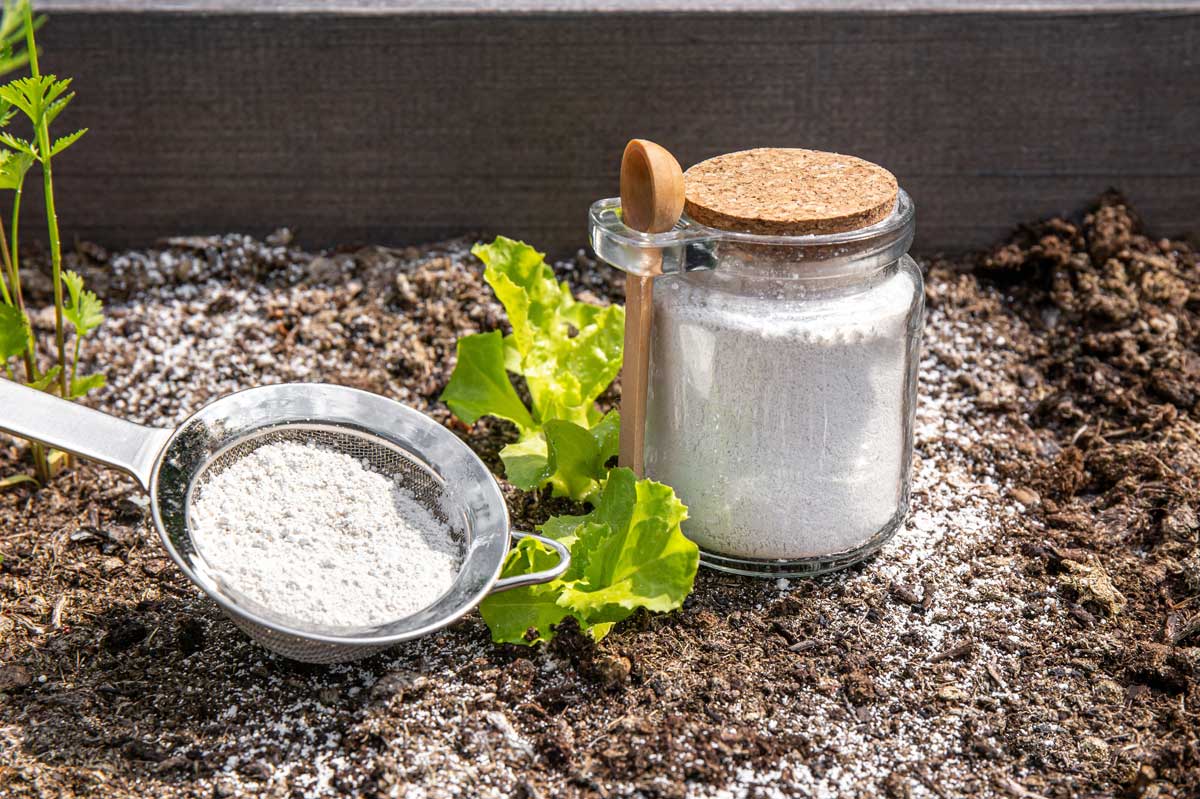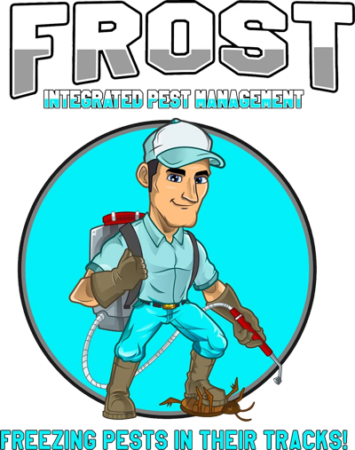Top 10 Natural Pest Control Methods for Your Home

When pests invade your home, they can cause significant damage to your property and pose health risks to you and your family. While many people rely on chemical-based pest control methods, these often come with side effects that can harm the environment and your health. Fortunately, there are numerous natural pest control solutions that can be just as effective in keeping your home pest-free without resorting to harsh chemicals. In this blog post, we will explore the top 10 natural pest control methods that can help you keep your home safe and pest-free.
The Benefits of Natural Pest Control
Natural pest control solutions are becoming increasingly popular for homeowners who are looking for eco-friendly and safe alternatives to traditional chemical pesticides. One of the biggest advantages of using natural pest control methods is that they are often non-toxic to humans, pets, and beneficial insects. Chemical pesticides, on the other hand, can leave harmful residues behind and may even contribute to health issues such as respiratory problems, allergies, or skin irritations. By opting for natural pest control methods, you can reduce the risk of exposure to these harmful chemicals while still effectively managing pest problems.
Another key benefit of using natural pest control solutions is their minimal impact on the environment. Many chemical pesticides can contaminate soil and water, harming local wildlife and polluting ecosystems. By choosing natural methods, you can help protect your surrounding environment and contribute to sustainability efforts.
Essential Oils for Pest Control
Essential oils have long been used for their medicinal and aromatic properties, but they also make excellent natural pest control solutions. Certain essential oils contain compounds that act as natural repellents for various pests, such as ants, mosquitoes, flies, and spiders. Some of the most effective essential oils for pest control include peppermint, citronella, eucalyptus, lavender, and tea tree oil.
To use essential oils as a pest deterrent, you can create a homemade spray by mixing a few drops of the oil with water in a spray bottle. Shake the mixture well and spray it in areas where pests are likely to enter your home, such as windowsills, doorways, and cracks in the walls. Essential oils can also be diffused into the air to repel insects and create a pleasant, pest-free atmosphere.
Diatomaceous Earth: A Natural Bug Killer
Diatomaceous earth (DE) is a naturally occurring substance made from the fossilized remains of tiny aquatic organisms called diatoms. This fine powder is highly effective at controlling pests, particularly crawling insects like ants, cockroaches, fleas, and bedbugs. When insects come into contact with diatomaceous earth, the sharp particles penetrate their exoskeletons, causing dehydration and eventually death.
The great thing about diatomaceous earth is that it is non-toxic to humans and pets. However, it is important to use food-grade diatomaceous earth, as some industrial-grade versions may contain harmful chemicals. To apply diatomaceous earth, simply sprinkle it in areas where pests are active, such as along baseboards, cracks, and entry points. It is important to wear a mask when applying diatomaceous earth to avoid inhaling the fine dust, which can be irritating to the respiratory system.
Natural Predators: Invite Beneficial Insects into Your Home
Introducing natural predators to your home is another effective way to control pests without using chemicals. Many insects and animals, such as ladybugs, praying mantises, and spiders, are natural predators of common pests like aphids, flies, and mosquitoes. By attracting these beneficial creatures to your garden or home, you can create a natural pest control system that works in harmony with the environment.
For example, ladybugs are voracious eaters of aphids and other small pests, while spiders can help control flies and mosquitoes. You can attract these natural predators by planting certain types of flowers and herbs that provide food and shelter, such as lavender, yarrow, and fennel. Additionally, you can create habitats for beneficial insects by placing a small water feature or insect hotel in your garden or near your home.
Homemade Traps for Common Pests
Homemade traps are a simple and effective way to capture and eliminate pests without resorting to harmful chemicals. Depending on the type of pest you are dealing with, there are several DIY traps you can create using common household items.
For example, to catch fruit flies, you can create a simple trap using a small jar, apple cider vinegar, and a few drops of dish soap. The vinegar attracts the flies, while the dish soap breaks the surface tension, causing them to drown. Similarly, you can create a homemade ant trap by mixing sugar and borax, which will attract ants and kill them once they consume the mixture.
For rodents like mice, you can set up a live trap using a bait such as peanut butter or sunflower seeds. Once the mouse enters the trap, it will be safely contained, allowing you to release it outside without harming it.
Cleanliness is Key to Preventing Pest Infestations
One of the most important pest control tips is maintaining a clean home. Pests, such as ants, rodents, and cockroaches, are often attracted to food sources and clutter. By keeping your home clean and free of food debris, you can reduce the likelihood of a pest infestation.
Make sure to wipe down surfaces, sweep floors, and take out the trash regularly. Store food in airtight containers to prevent attracting pests, and be sure to clean up any spills or crumbs immediately. Pay particular attention to areas that are often overlooked, such as behind appliances, inside cabinets, and under furniture. By creating an environment that is less inviting to pests, you can significantly reduce the chances of an infestation.
Vinegar: A Multi-Purpose Pest Deterrent
Vinegar is a versatile and natural product that can be used in a variety of ways to repel pests. Its strong odor is unpleasant to many insects, including ants, fruit flies, and spiders, making it an excellent natural pest control solution. Additionally, vinegar can be used as a cleaning agent to remove pheromone trails left by ants and other pests, which can help prevent them from returning.
To use vinegar as a pest deterrent, mix equal parts white vinegar and water in a spray bottle. Spray the mixture around areas where pests are active, such as windowsills, doorways, and cracks. You can also use vinegar to clean surfaces and remove any lingering odors that may attract pests.
Garlic: A Natural Pest Repellent
Garlic is another powerful natural pest control solution. Its strong odor repels a wide variety of pests, including mosquitoes, flies, and aphids. To use garlic as a repellent, you can make a homemade garlic spray by blending several garlic cloves with water and a small amount of soap. Strain the mixture and transfer it to a spray bottle, then apply it to plants, around the home, or in areas where pests are a problem.
Garlic works as both a repellent and a pesticide, making it effective against pests that are already present. It is also safe to use around pets and children, as it is non-toxic.
Citrus Peels & Other Natural Repellents
Certain fruits, like citrus, have natural properties that can deter pests. The strong scent of citrus peels, such as lemon and orange, repels insects like spiders, ants, and roaches. You can place fresh citrus peels around entry points, cracks, and corners of your home to keep pests away. Alternatively, you can boil the peels in water and strain the mixture to create a homemade pest spray.
Other natural repellents include herbs like rosemary, mint, and bay leaves, which can be placed in areas where pests tend to gather. These herbs emit strong scents that are known to repel various insects, making them an excellent addition to your pest control arsenal.
Sealing Entry Points to Prevent Pests
An often-overlooked but highly effective pest control method is sealing up any entry points that pests may use to get into your home. Inspect your home for gaps and cracks around windows, doors, pipes, and vents. Use caulk, weather-stripping, or mesh screens to seal these openings and prevent pests from entering.
In addition to sealing entry points, ensure that your home is well-maintained by fixing leaky pipes, clearing clogged gutters, and trimming vegetation around your home. Pests are often drawn to areas that provide shelter and easy access to food and water, so making your home less inviting will help keep them at bay.
Conclusion
Natural pest control solutions offer a safe, effective, and eco-friendly alternative to traditional chemical methods. By incorporating some of the top natural pest control methods into your routine, such as using essential oils, diatomaceous earth, and natural predators, you can keep your home free of pests without compromising your health or the environment. Additionally, simple strategies like maintaining cleanliness, using homemade traps, and sealing entry points can further reduce the likelihood of a pest infestation. With these pest control tips, you can enjoy a pest-free home the natural way.
